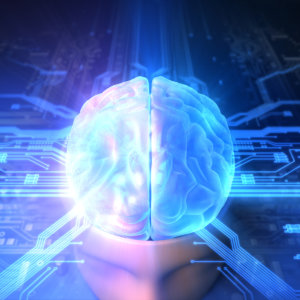How Human-Computer ‘Superminds’ Are Redefining the Future of Work
Virtually all human achievements have been made by groups of people, not lone individuals. As we incorporate smart technologies further into traditionally human processes, an even more powerful form of collaboration is emerging.
Topics
The ongoing, and sometimes loud, debate about how many and what kinds of jobs smart machines will leave for humans to do in the future is missing a salient point: Just as the automation of human work in the past allowed people and machines to do many things that couldn’t be done before, groups of people and computers working together will be able to do many things in the future that neither can do alone now.
To think about how this will happen, it’s useful to contemplate an obvious but not widely appreciated fact. Virtually all human achievements — from developing written language to making a turkey sandwich — require the work of groups of people, not just lone individuals. Even the breakthroughs of individual geniuses like Albert Einstein aren’t conjured out of thin air; they are erected on vast amounts of prior work by others.
The human groups that accomplish all these things can be described as superminds. I define a supermind as a group of individuals acting together in ways that seem intelligent.
Superminds take many forms. They include the hierarchies in most businesses and other organizations; the markets that help create and exchange many kinds of goods and services; the communities that use norms and reputations to guide behavior in many professional, social, and geographical groups; and the democracies that are common in governments and some other organizations.
All superminds have a kind of collective intelligence, an ability to do things that the individuals in the groups couldn’t have done alone. What’s new is that machines can increasingly participate in the intellectual, as well as the physical, activities of these groups. That means we will be able to combine people and machines to create superminds that are smarter than any groups or individuals our planet has ever known.
To do that, we need to understand how people and computers can work together more effectively on tasks that require intelligence. And for that, we need to define intelligence.
Get Updates on Transformative Leadership
Evidence-based resources that can help you lead your team more effectively, delivered to your inbox monthly.
Please enter a valid email address
Thank you for signing up
What Is Intelligence?
The concept of intelligence is notoriously slippery, and different people have defined it in different ways. For our purposes, let’s say that intelligence involves the ability to achieve goals.
References
1. R. Brooks, “Artificial Intelligence Is a Tool, Not a Threat,” Rethink Robotics (blog), Nov. 10, 2014, www.rethinkrobotics.com.
2. David Ferrucci, email to the author, Aug. 24, 2016. Ferrucci led the IBM team that developed Watson.
3. S. Armstrong and K. Sotala, “How We’re Predicting AI — or Failing To,” in “Beyond AI: Artificial Dreams,” ed. J. Romportl, P. Ircing, E. Zackova, M. Polak, and R. Schuster (Pilsen, Czech Republic: University of West Bohemia, 2012): 52-75.
4. N. Bostrom, “Superintelligence: Paths, Dangers, Strategies” (Oxford, U.K.: Oxford University Press, 2014).
5. M. Minsky, “Society of Mind” (New York: Simon and Schuster, 1988).
6. L. Biewald, “Why Human-in-the-Loop Computing Is the Future of Machine Learning,” Data Science (blog), Nov. 13, 2015, www.computerworld.com.
7. H.J. Wilson, P. Daugherty, and P. Shukla, “How One Clothing Company Blends AI and Human Expertise,” Nov. 21, 2016, http://hbr.org.
8. S. Wininger, “The Secret Behind Lemonade’s Instant Insurance,” Nov. 23, 2016, http://stories.lemonade.com.
9. A. Kittur, B. Smus, S. Khamkar, and R.E. Kraut, “CrowdForge: Crowdsourcing Complex Work,” in “Proceedings of the 24th Annual ACM Symposium Adjunct on User Interface Software and Technology,” ed. J. Piece, M. Agrawala, and S. Klemmer (New York: ACM Press, 2011); and “CrowdForge: Crowdsourcing Complex Tasks,” Boris Smus (blog), Feb. 2, 2011, http://smus.com.
10. T.W. Malone, J.V. Nickerson, R. Laubacher, L.H. Fisher, P. de Boer, Y. Han, and W.B. Towne, “Putting the Pieces Back Together Again: Contest Webs for Large-Scale Problem Solving,” March 1, 2017, https://ssrn.com.
11. J. Wolfers and E. Zitzewitz, “Prediction Markets,” Journal of Economic Perspectives 18, no. 2 (2004): 107-126.
12. J. Wolfers and E. Zitzewitz, “Interpreting Prediction Market Prices as Probabilities,” working paper W12200, National Bureau of Economic Research, Cambridge, Massachusetts, May 2006, www.nber.org.
13. V. Granville, “21 Data Science Systems Used by Amazon to Operate Its Business” (blog), Nov. 19, 2015, www.datasciencecentral.com.
14. P&G sold the Pringles business to Kellogg Co. in 2012. For a description of the invention of the process for printing on Pringles, see L. Huston and N. Sakkab, “Connect and Develop: Inside Procter & Gamble’s New Model for Innovation,” Harvard Business Review 84 (March 2006): 58-66.
15. Martin Reeves and Daichi Ueda use the term “integrated strategy machine” to describe a somewhat similar idea. But unlike their article, this article focuses more on how large numbers of people throughout the organization and beyond can be involved in the process and on the specific roles people and machines will play. See M. Reeves and D. Ueda, “Designing the Machines That Will Design Strategy,” http://hbr.org.


Comment (1)
Hadi Taheri